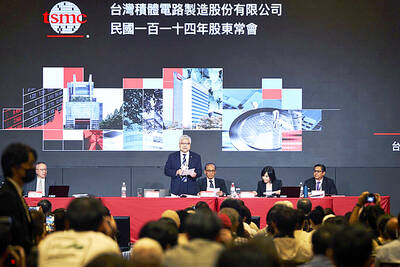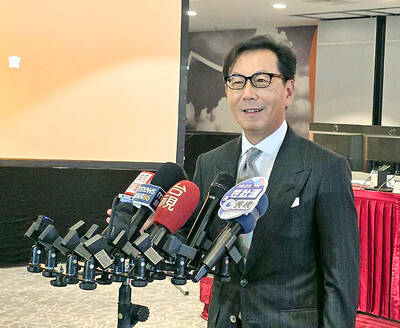For Roche Holding AG, collaborating with technology start-ups is no longer enough. Now it wants to own them.
The Swiss oncology giant bought three tech companies and joined forces with another in the past eight months as it seeks to take advantage of a flood of data from patients and clinical studies. The most recent deal, a US$1.9 billion takeover of Flatiron Health Inc, gives it a platform to comb through medical records, gene sequences and insurance claims to find out what cancer therapies work.
“Real-world data — and all the associated analytical tools, like machine learning — this is a field which will get very important for research and development” and eventually for reimbursement, Roche chief executive officer Severin Schwan said in an interview late last year. “We have made very conscious decisions to explore into this direction in a more strategic way, not just to stumble into it.”
Drugmakers and the insurers that decide whether therapies will be reimbursed are looking for evidence to guide both the development of new products and the use of treatments after they are approved. Roche’s Flatiron deal is a harbinger of more deals to come, especially in the demanding field of oncology, said Pierre Corby, a Paris-based analyst for Oddo & Cie.
“It’s more and more complicated in the space of oncology to find the right treatment for the right person,” Corby said by telephone. “Even very smart oncologists have difficulties right now finding the right treatments and the right doses.”
The Flatiron deal is expected to close in the first half of this year.
The New York-based health-data start-up was founded by Nat Turner and Zach Weinberg. Roche already owns almost 13 percent of Flatiron after leading a US$175 million funding round in 2016. The company has raised more than US$300 million from investors such as Google parent Alphabet Inc and First Round Capital.
Flatiron’s technology is also aimed at enabling doctors to look at how other patients fare with various therapies and use those results to customize treatment for patients with similar illnesses. These personalized approaches have become an important part of treating cancer, where therapies often have very different results in patients whose disease appears similar.
The pharma industry is increasingly turning to huge databases to gain understanding of complex interactions between drugs and organisms, and the overall impact that treatments have on the outcomes of health problems.
AstraZeneca PLC is ramping up its use of such real-world patient information to better understand the diseases it is aiming at, as well as study drugs in development, according to Ludovic Helfgott, the vice president of the drugmaker’s cardiovascular, metabolism and renal unit.
Analyzing data aggregated from patients’ medical records can help confirm or question observations from more rigorous randomized controlled trials, he said.
“You can have very quickly a massive amount of information that’s clinically relevant,” Helfgott said in an interview last month.
Meanwhile, Roche and General Electric Co’s health division made a deal last month to develop software to help oncologists make care decisions more quickly. In November last year, Roche bought Viewics Inc, an analytics company that helps laboratories parse data to make business strategy decisions. And in June, Roche acquired mySugr, an app that helps people with diabetes track their blood glucose levels.
The Swiss company also holds more than half of the shares of Foundation Medicine Inc, which helps doctors and patients choose treatments based on the tumors’ genetic profiles.

CAUTIOUS RECOVERY: While the manufacturing sector returned to growth amid the US-China trade truce, firms remain wary as uncertainty clouds the outlook, the CIER said The local manufacturing sector returned to expansion last month, as the official purchasing managers’ index (PMI) rose 2.1 points to 51.0, driven by a temporary easing in US-China trade tensions, the Chung-Hua Institution for Economic Research (CIER, 中華經濟研究院) said yesterday. The PMI gauges the health of the manufacturing industry, with readings above 50 indicating expansion and those below 50 signaling contraction. “Firms are not as pessimistic as they were in April, but they remain far from optimistic,” CIER president Lien Hsien-ming (連賢明) said at a news conference. The full impact of US tariff decisions is unlikely to become clear until later this month

Popular vape brands such as Geek Bar might get more expensive in the US — if you can find them at all. Shipments of vapes from China to the US ground to a near halt last month from a year ago, official data showed, hit by US President Donald Trump’s tariffs and a crackdown on unauthorized e-cigarettes in the world’s biggest market for smoking alternatives. That includes Geek Bar, a brand of flavored vapes that is not authorized to sell in the US, but which had been widely available due to porous import controls. One retailer, who asked not to be named, because

CHIP DUTIES: TSMC said it voiced its concerns to Washington about tariffs, telling the US commerce department that it wants ‘fair treatment’ to protect its competitiveness Taiwan Semiconductor Manufacturing Co (TSMC, 台積電) yesterday reiterated robust business prospects for this year as strong artificial intelligence (AI) chip demand from Nvidia Corp and other customers would absorb the impacts of US tariffs. “The impact of tariffs would be indirect, as the custom tax is the importers’ responsibility, not the exporters,” TSMC chairman and chief executive officer C.C. Wei (魏哲家) said at the chipmaker’s annual shareholders’ meeting in Hsinchu City. TSMC’s business could be affected if people become reluctant to buy electronics due to inflated prices, Wei said. In addition, the chipmaker has voiced its concern to the US Department of Commerce

STILL LOADED: Last year’s richest person, Quanta Computer Inc chairman Barry Lam, dropped to second place despite an 8 percent increase in his wealth to US$12.6 billion Staff writer, with CNA Daniel Tsai (蔡明忠) and Richard Tsai (蔡明興), the brothers who run Fubon Group (富邦集團), topped the Forbes list of Taiwan’s 50 richest people this year, released on Wednesday in New York. The magazine said that a stronger New Taiwan dollar pushed the combined wealth of Taiwan’s 50 richest people up 13 percent, from US$174 billion to US$197 billion, with 36 of the people on the list seeing their wealth increase. That came as Taiwan’s economy grew 4.6 percent last year, its fastest pace in three years, driven by the strong performance of the semiconductor industry, the magazine said. The Tsai